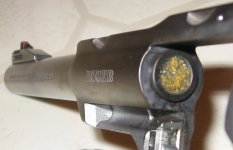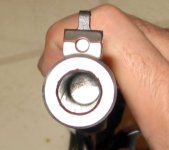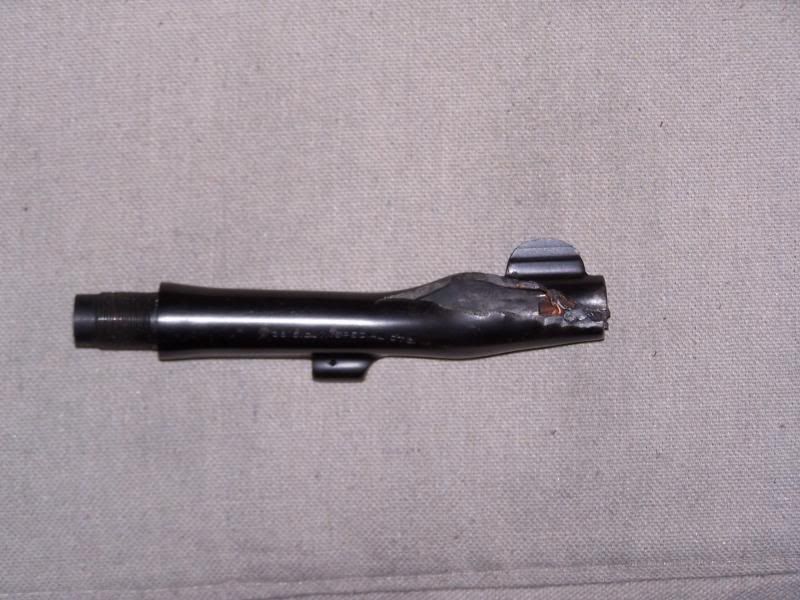I saw this same thing posted elsewhere, and the explanation was, they were "light loaded" .38's.
I had a 4" Model 29 that had a 240 grain LSWC stuck in about the same position as the first bullet in the above barrel. The disk in my Lee 1000 progressive was hanging up, and I had caught it, and I had the problem isolated to one box, so I was on the look out for it. Im sure there was "some" powder in the case, as there was a report, although a good bit less than normal.
Ive had a few 357MAG's fire the primer and not ignite the powder charge, and still, it drove the bullet just past the forcing cone, but not much further.
I can only really see something like the above happening, if the shooter wasnt paying attention. I think if youre used to the load, youre gong to know somethings not right, and if you arent used to it, you'd be checking at the sound of the first shot.
Then again, if it is from Miculeks page, and he was shooting, maybe it took that long for his finger to slow down.
I had a 4" Model 29 that had a 240 grain LSWC stuck in about the same position as the first bullet in the above barrel. The disk in my Lee 1000 progressive was hanging up, and I had caught it, and I had the problem isolated to one box, so I was on the look out for it. Im sure there was "some" powder in the case, as there was a report, although a good bit less than normal.
Ive had a few 357MAG's fire the primer and not ignite the powder charge, and still, it drove the bullet just past the forcing cone, but not much further.
I can only really see something like the above happening, if the shooter wasnt paying attention. I think if youre used to the load, youre gong to know somethings not right, and if you arent used to it, you'd be checking at the sound of the first shot.
Then again, if it is from Miculeks page, and he was shooting, maybe it took that long for his finger to slow down.



